Managing cutworms in vegetable crops
Learn the symptoms, biology, monitoring and management strategies for cutworms in vegetable crops.
Introduction
Cutworms are the larvae of several species of night-flying moths (Order Lepidoptera, family Noctuidae). Cutworms are a common pest of many vegetable crops including carrots, celery, lettuce, onion, tomato, pepper, eggplant, cole crops, rutabaga, beans, cucurbit crops, sweet corn and several others. Most species of cutworms are solitary feeders found in the soil, however some species occasionally attack the foliage and/or fruit of some vegetable crops.
Identifying Cutworms
There are many species of cutworms attacking a wide range of cultivated and wild plants. Cutworms commonly found in Canada include the black cutworm, Agrotis ipsilon; variegated cutworm, Pedridroma saucia; dark-sided cutworm, Euxoa messoria; dingy cutworm, Feltia jaculifera; glassy cutworm, Crymodes devastator; red-backed cutworm, Euxoa ochrogaster; black army cutworm, Actebia fennica; and white cutworm, Euxoa scandens.
The black cutworm and the variegated cutworm are the 2 most common species attacking vegetables although other species may be present in some areas. Recognizing damage from cutworms is relatively simple when plants are small. Seedlings are often 'cut' off at ground level and if the soil around the plants is dug up to a depth of about 5 cm, the characteristic cutworm larva can often be found. (Figure 1 & 2) Cutworms generally curl up as illustrated when disturbed. Cutworms feed at night and will not generally be observed on plants or on the soil surface during the day.
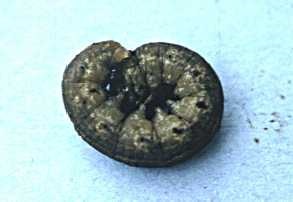
Figure 1. Black cutworm
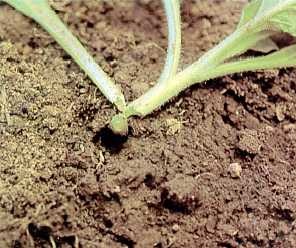
Figure 2. Characteristic damage from cutworm, cut seedling
Black cutworms are grey to black with no striping on the body whereas variegated cutworms are usually brown on the upper surface and cream-coloured on the lower surface. Variegated cutworms also have a row of yellow spots down the back. (Figure 3) The red-backed cutworm has a reddish-brown, translucent stripe down its back giving it a distinct appearance. The dark-sided cutworm is a grey-brown cutworm that has distinct striping along the sides giving it a darker appearance. (Figure 4) The glassy cutworm has a greenish-white body with a translucent appearance and a pale red head. The black army cutworm feeds in groups unlike the other species and is characterized when small by having a very dark, velvety-black body with faint white striping. As the black army cutworm matures it becomes brown with pale yellow stripes. (Figure 5).
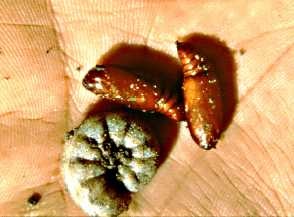
Figure 3. Variegated cutworm and pupae (Courtesy of Joe Uyenaka)
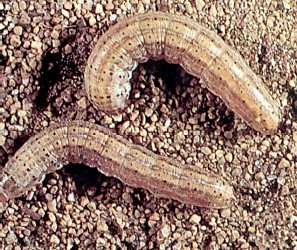
Figure 4. Dark-sided cutworm
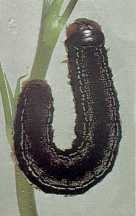
Figure 5. Black army cutworm
Identification of cutworm adult moths may be difficult without the assistance of a crop specialist or trained entomologist. Cutworm moths are generally dark grey-brown moths with varying mottled patterns or spots on their forewings. Most species have grey-brown-buff hindwings.
Biology
Cutworms overwinter as eggs, larvae, pupae or adult moths depending upon the species. Not all cutworm species overwinter in Ontario during normal winters. For instance a large proportion of the variegated cutworm population is thought to migrate into Ontario each season. Cutworms have 1 to 4 generations per year depending upon the species and location.
The majority of cutworm damage occurs to seedling vegetables early in the season and when plants are small. Moths lay eggs on the soil and the larvae hatch to feed on plants. Weedy areas, fields of grasses or pasture are ideal sites for cutworms to overwinter. It is often in these areas and along field borders where problems arise. If weeds are permitted to grow in the fall after crop harvest and the fall and winter seasons are mild, large numbers of cutworms may survive to attack vegetables in the spring.
Some species of climbing cutworms lay eggs in groups on the leaves of plants and the larvae hatch out to begin feeding on leaves, flowers and fruit of some vegetables. Late season species, such as the variegated cutworm, often do more damage to mature vegetable plants and their marketable portions. Damage to celery from climbing cutworms can be severe (Figures 6 & 7). Variegated cutworms also damage tomatoes when fruit is maturing, leading to serious losses. (Figure 8) Damage to other vegetables is normally less severe or noticeable, however peppers, radishes, rutabagas and lettuce may experience limited damage from climbing cutworms.
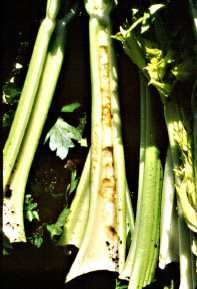
Figure 6. Damage to celery stalk from climbing cutworms
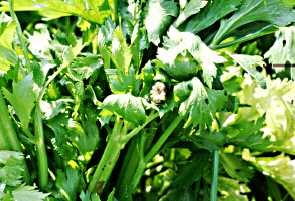
Figure 7. Variegated cutworm on celery plant
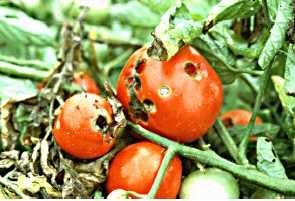
Figure 8. Variegated cutworm damage on tomato fruit. (Courtesy of Joe Uyenaka)
Monitoring
The moths of some species of cutworms can be monitored using pheromone traps or black light traps placed strategically in vegetable growing areas. However this information may be of limited value in predicting the actual potential for crop damage. Regular and consistent field monitoring as part of an integrated crop management program is the best way to monitor for cutworms and their damage. Control of cutworms is far better when the larvae are small - very close inspection of seedling vegetables from emergence stage onwards is necessary. For some crops such as tomatoes, peppers and celery, monitoring for cutworms must continue through to harvest.
Once the characteristic symptoms of cut plants is observed, dig around these plants in the soil to a depth of about 5 cm to find the cutworms. Feeding damage to celery and tomatoes often occurs very close to harvest and control measures may not be effective. Monitoring weedy areas and neighbouring fields, as well as fall weed flushes, may also be helpful in predicting where cutworm problems may occur the following season.
Management
For black cutworm a guideline for many seedling vegetables is 5% plants infested. Treatment with insecticides is only effective if the larvae are very small (under 2.5 cm) and soil conditions are favourable. If damage is isolated to a small patch or field border area, spot treatments are recommended. Apply insecticide treatments late in the day. In many cases the level of damage is not high enough to warrant insecticide treatments.
For climbing cutworms that damage the later growth stages of vegetables, insecticide treatments may not be effective if the crop canopy is large or the cutworms are larger than 2.5 cm. Only consistent monitoring can determine if conditions are good for control of cutworm larvae.
Consult the latest edition of OMAFRA Publication 363, Vegetable Production Recommendations for details on cutworm management using insecticides.
Many natural predators, parasites and birds prey upon cutworms and reduce the population. Take steps to preserve such beneficial organisms in and around vegetable fields. Reducing unnecessary spraying for other pests and providing refuges may help to encourage beneficial organisms.
Field selection, field history and weed management are important methods to reduce damage from cutworms. Fields that had large weed populations, especially grasses and chickweed, may experience more cutworm problems the following season. Crop rotation is also a helpful management tool.
Managing cutworms requires regular and consistent monitoring and diligent field management as part of an ICM (Integrated crop management) program. For more information about managing cutworms, consult a crop specialist, a crop input supplier or processing company fieldpersons.